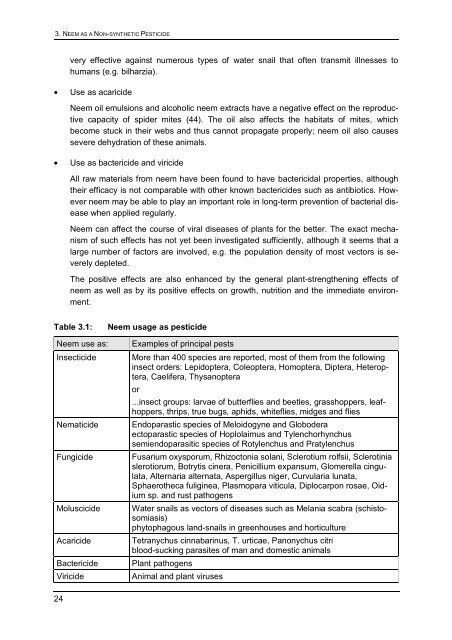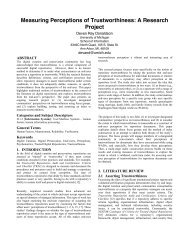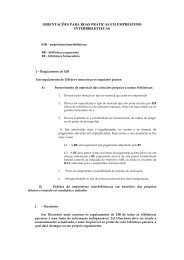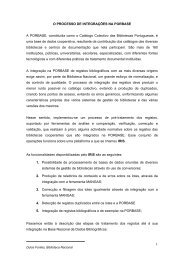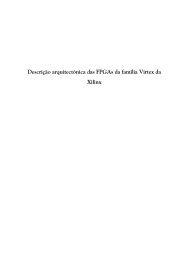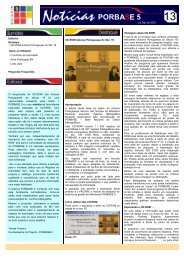Status report on global Neem usage - Biblioteca Nacional de Portugal
Status report on global Neem usage - Biblioteca Nacional de Portugal
Status report on global Neem usage - Biblioteca Nacional de Portugal
Create successful ePaper yourself
Turn your PDF publications into a flip-book with our unique Google optimized e-Paper software.
3. NEEM AS A NON-SYNTHETIC PESTICIDE<br />
24<br />
very effective against numerous types of water snail that often transmit illnesses to<br />
humans (e.g. bilharzia).<br />
• Use as acarici<strong>de</strong><br />
<strong>Neem</strong> oil emulsi<strong>on</strong>s and alcoholic neem extracts have a negative effect <strong>on</strong> the reproductive<br />
capacity of spi<strong>de</strong>r mites (44). The oil also affects the habitats of mites, which<br />
become stuck in their webs and thus cannot propagate properly; neem oil also causes<br />
severe <strong>de</strong>hydrati<strong>on</strong> of these animals.<br />
• Use as bacterici<strong>de</strong> and virici<strong>de</strong><br />
All raw materials from neem have been found to have bactericidal properties, although<br />
their efficacy is not comparable with other known bacterici<strong>de</strong>s such as antibiotics. However<br />
neem may be able to play an important role in l<strong>on</strong>g-term preventi<strong>on</strong> of bacterial disease<br />
when applied regularly.<br />
<strong>Neem</strong> can affect the course of viral diseases of plants for the better. The exact mechanism<br />
of such effects has not yet been investigated sufficiently, although it seems that a<br />
large number of factors are involved, e.g. the populati<strong>on</strong> <strong>de</strong>nsity of most vectors is severely<br />
<strong>de</strong>pleted.<br />
The positive effects are also enhanced by the general plant-strengthening effects of<br />
neem as well as by its positive effects <strong>on</strong> growth, nutriti<strong>on</strong> and the immediate envir<strong>on</strong>ment.<br />
Table 3.1: <strong>Neem</strong> <strong>usage</strong> as pestici<strong>de</strong><br />
<strong>Neem</strong> use as: Examples of principal pests<br />
Insectici<strong>de</strong> More than 400 species are <str<strong>on</strong>g>report</str<strong>on</strong>g>ed, most of them from the following<br />
insect or<strong>de</strong>rs: Lepidoptera, Coleoptera, Homoptera, Diptera, Heteroptera,<br />
Caelifera, Thysanoptera<br />
or<br />
...insect groups: larvae of butterflies and beetles, grasshoppers, leafhoppers,<br />
thrips, true bugs, aphids, whiteflies, midges and flies<br />
Nematici<strong>de</strong> Endoparastic species of Meloidogyne and Globo<strong>de</strong>ra<br />
ectoparastic species of Hoplolaimus and Tylenchorhynchus<br />
semiendoparasitic species of Rotylenchus and Pratylenchus<br />
Fungici<strong>de</strong> Fusarium oxysporum, Rhizoct<strong>on</strong>ia solani, Sclerotium rolfsii, Sclerotinia<br />
slerotiorum, Botrytis cinera, Penicillium expansum, Glomerella cingulata,<br />
Alternaria alternata, Aspergillus niger, Curvularia lunata,<br />
Sphaerotheca fuliginea, Plasmopara viticula, Diplocarp<strong>on</strong> rosae, Oidium<br />
sp. and rust pathogens<br />
Moluscici<strong>de</strong> Water snails as vectors of diseases such as Melania scabra (schistosomiasis)<br />
phytophagous land-snails in greenhouses and horticulture<br />
Acarici<strong>de</strong> Tetranychus cinnabarinus, T. urticae, Pan<strong>on</strong>ychus citri<br />
blood-sucking parasites of man and domestic animals<br />
Bacterici<strong>de</strong> Plant pathogens<br />
Virici<strong>de</strong> Animal and plant viruses


